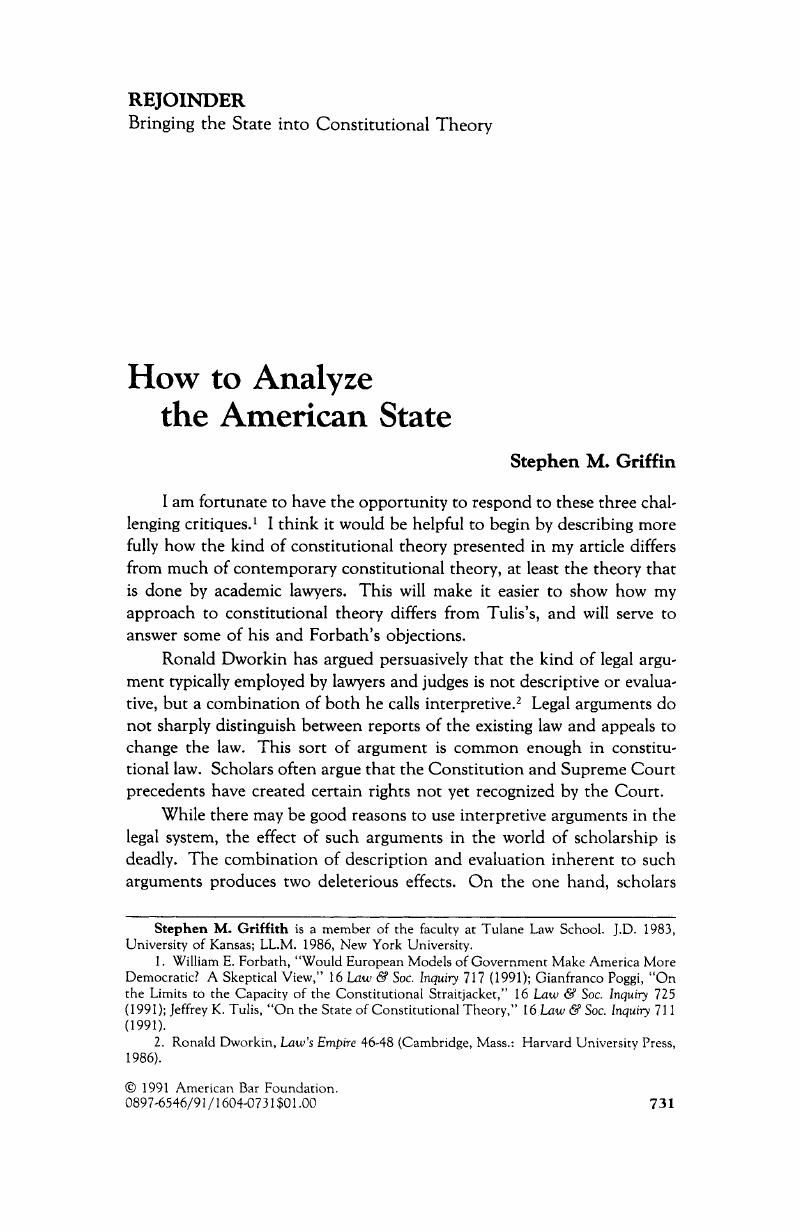No CrossRef data available.
Published online by Cambridge University Press: 27 December 2018

1 Forbath, William E., “Would European Models of Government Make America More Democratic? A Skeptical View,” 16 Law & Soc. Inquiry 717 (1991); Poggi, Gianfranco, “On the Limits to the Capacity of the Constitutional Straitjacket,” 16 Law & Soc. Inquiry 725 (1991); Tulis, Jeffrey K., “On the State of Constitutional Theory,” 16 Law & Soc. Inquiry 711 (1991).Google Scholar
2 Ronald Dworkin, Law's Empire 46–48 (Cambridge, Mass.: Harvard University Press, 1986).Google Scholar
3 I criticized some theories of judicial review on this ground in an earlier article. See Stephen M. Griffin, “What Is Constitutional Theory? The Newer Theory and the Decline of the Learned Tradition,” 62 S. Cal. L. Rev. 493, 510–14 (1989).Google Scholar
4 After Herbert Butterfield, The Whig Interpretation of History (New York: W. W. Norton, 1965).Google Scholar
5 16 Law & Soc. Inquiry at 713.Google Scholar
6 See David Hackett Fischer, Historians' Fallacies 135–40 (New York: Harper & Row, 1970).Google Scholar